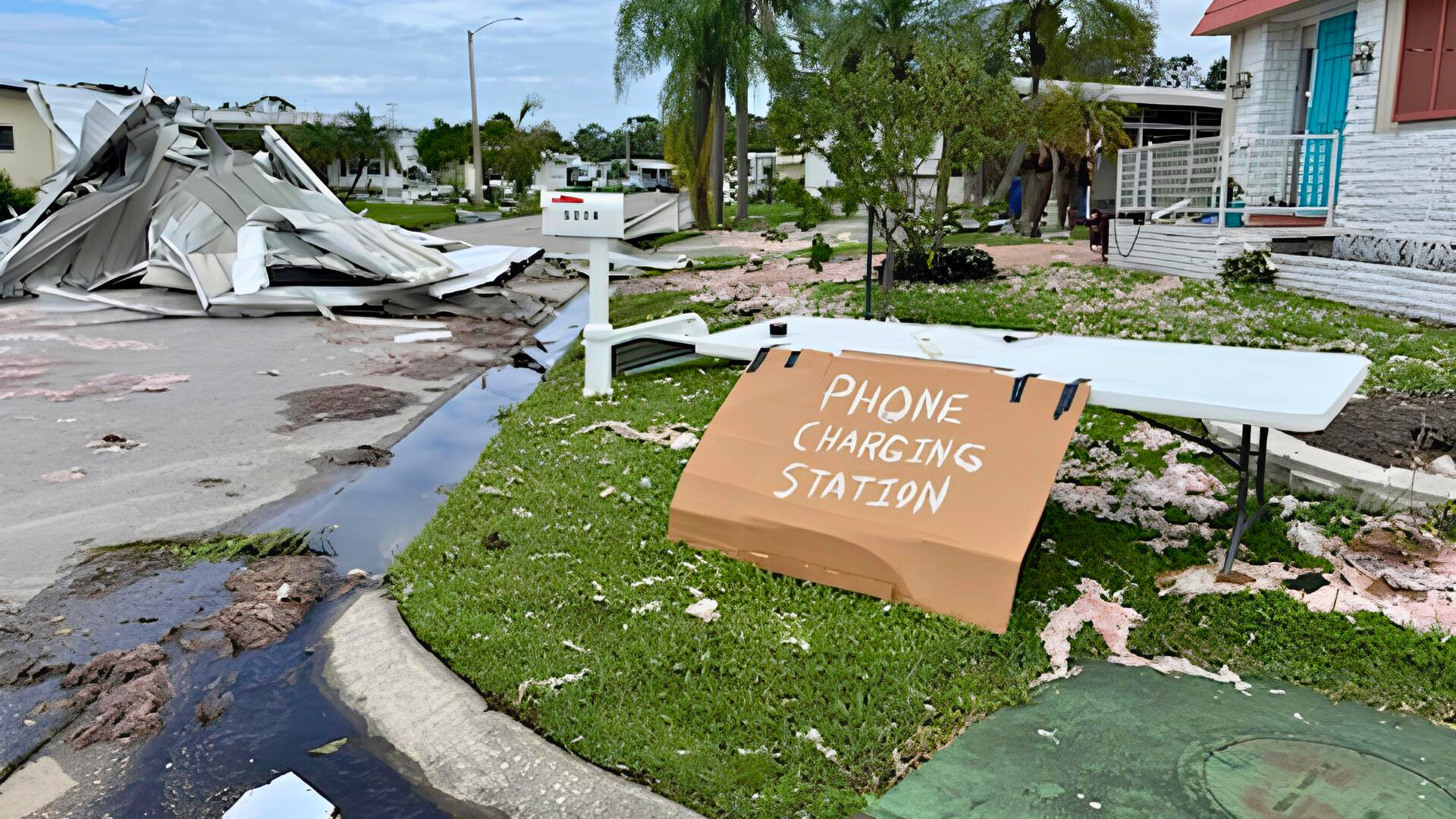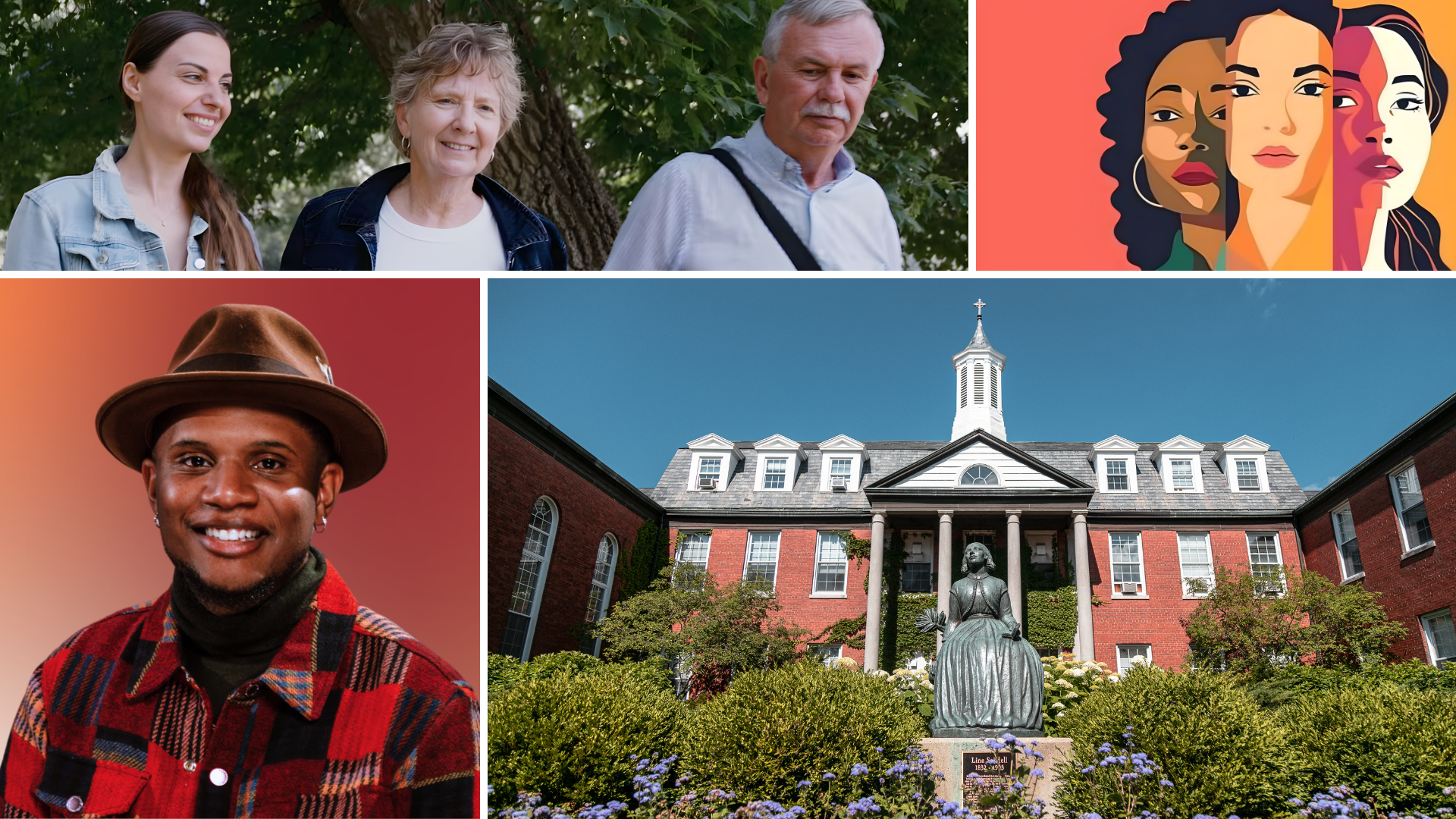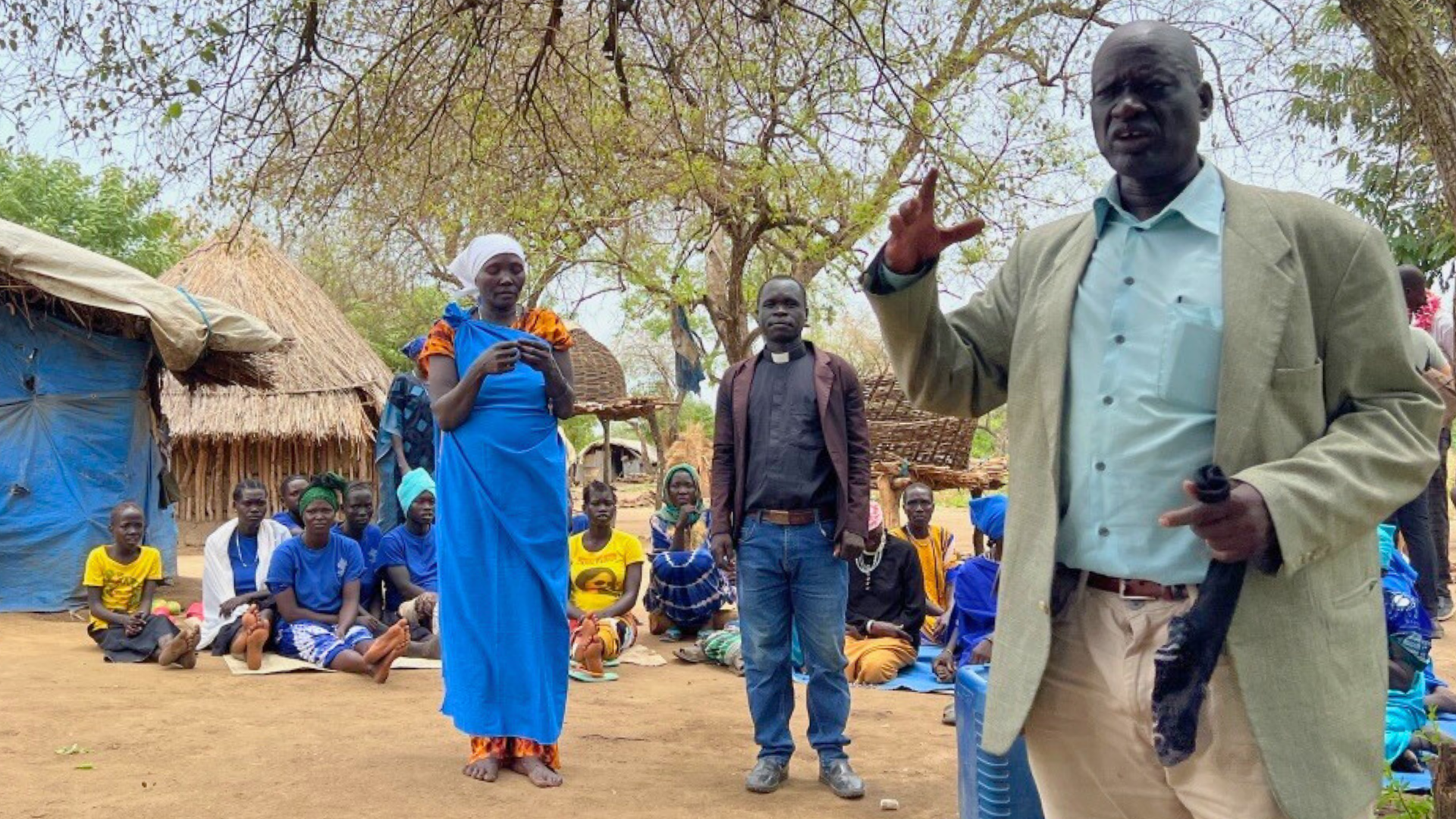Covenant pastors in North Carolina, Florida, and Georgia reflect on the toll of Hurricanes Helene and Milton.
Deadly winds, catastrophic flooding, and other hazardous conditions proliferated across the American southeast region as a consequence of two deadly hurricanes that made landfall within two weeks of each other. Hurricanes Helene and Milton—categories 4 and 5 storms, respectively—pummeled their respective areas with winds ranging from 140 to 180 miles per hour.
For reference, 180 miles per hour is about three times the speed limit on the average American interstate highway. Imagine debris from destroyed buildings, roadways, and vehicles being hurled through the air at that speed.
Covenanters in and around the path of these storms are faithfully serving in their communities to respond to the swath of brokenness left behind. What follows is a snapshot of various ways these efforts have come together. These stories are in no way intended to be exhaustive; rather they are reminders of the good, generous work of the Evangelical Covenant Church through the domestic disaster initiative of Love Mercy Do Justice. As we head into the final month of the official hurricane season for 2024, the Companion invites readers to join that work by giving to the Domestic Disaster Response Fund.
Surviving in Swannanoa
When Pastor Cindy Riley moved back to her hometown, she did so to help take care of loved ones. These days her caretaking circle has widened considerably.
Rev. Riley is a credentialed pastor who first connected to the Covenant through Wellspring Covenant Church in Aiea, Hawaii, where she was discipled in her faith in Jesus and where she first sensed her call to ministry. She pursued seminary training and eventually ordination. However, after her mother experienced some health issues, Riley moved back to her old stomping grounds in Swannanoa, North Carolina.

After some time there, she felt called to plant a church. A few years earlier she had been trained as a disaster relief chaplain, though at the time she was unsure exactly why she felt called to do so. Nestled in a mountainous region of North Carolina, Swannanoa is normally protected from hurricane conditions. Before Hurricane Helene, the community hadn’t experienced such catastrophic flooding in over two decades.
“That was probably the scariest I’ve ever been in my life,” Riley told me during a recent video call, recounting her initial experience with the storm.
“Water came in pretty quickly for a couple of days. It was very scary because roads were closed in our particular neighborhood. We were there 24 hours before we could get out, with no cell service and no communications. We didn’t know what was going on around us. We didn’t know how good or bad it was anywhere else. We were wondering, ‘Does anybody even know we’re here flooded out?’”
She told me about a particularly scary moment that changed her perspective and helped gather her resolve.
“One of my neighbors was on her porch, three to four feet of water just roaring around her. She couldn’t get off the porch.” Riley had been trying to get a 911 dispatcher on the phone and finally connected using the emergency SOS mode on her iPhone.
“I’ll send someone soon,” the dispatcher told her.
But before Riley could get her hopes up, the dispatcher mentioned her location. That’s when Riley found out that all the 911 services were down around Swannanoa, so the closest dispatcher to take her call was in Fayetteville—four or five hours away.
Oh shoot, Riley thought. Nobody is coming. It’s just us.
Her disaster relief training ended up being really useful. In the hours and days that followed, the people in her neighborhood pulled together and began helping one another in a variety of ways.

“Neighbors were pulling together, emptying their freezers, pulling out the grills, and whoever had a gas stove cooked on it. That first night, my husband, Dennis, and I slept on one neighbor’s floor and another neighbor’s couch. We were finally able to get out on one of the roads when some of the neighbors came out with chainsaws and opened up the road.”
Eventually, Riley was able to help relocate one of the single moms in her neighborhood to a space in the ministry where she serves. In the days and weeks following, she worked alongside neighbors, helping to mobilize resources and equip people with essential items.
Riley has been doing her best to bolster a sense of hope in and around the community. She’s far from alone. Churches and businesses all around Swannanoa have been pooling resources and helping to feed people, providing hot meals for those displaced by the storm—including Riley and her husband, whose home was “gutted” after the storm. Rather than insurance, their only official financial assistance for rebuilding will come from the Federal Emergency Management Agency (FEMA).
“So we’ll be living in this tiny one-bedroom apartment that’s meant for a mom and her little children for as long as we can,” Riley told me. “And I’ll get a new taste of ministry being right here with people.”
Finding Fixes in Florida
Ministry right there with the people is an apt description of what Rev. Dan Pietrzyk and Tim Kirkpatrick have been doing in Florida in the aftermath of the two hurricanes.
Pietrzyk is a retired Covenant pastor who’s been serving as interim pastor in two congregations south of Tampa: Trailer Estates Covenant Church in Bradenton and Tri-Par Covenant Church in nearby Sarasota. Kirkpatrick is the chair of the leadership team at Trailer Estates and by default became the chair of the ad hoc hurricane relief committee.
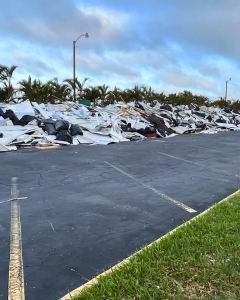
While Pietrzyk is relatively new to Florida, Kirkpatrick has been living in Sarasota Bay for some time and was able to provide historical context to the devastation. Along with many other Floridians, Kirkpatrick had ridden out many storms. He explained that nearby barrier islands often blunt the impact of hurricane storm waters.
But Helene was different.
“When Helene struck, it was primarily surge water,” said Kirkpatrick. “It decimated about 50 homes that were near the water, mostly saltwater damage.” The damage came not only from the water itself but the elevated levels of bacteria that infected everything it touched. “For that first week, we were hauling materials out of homes with water damage. The pile of debris in the parking lot was unimaginable. It was at least 10 feet high by 100 feet long.”
Kirkpatrick became emotional as we spoke over the phone.
“It was heart-wrenching, because of all the different things that were lost. Photographs, memorabilia, mattresses, furniture, food, appliances, cabinetry, clothing, shoes… it was just unbelievable.”
He says they were six days deep into that difficult work when Hurricane Milton struck. That damage was completely different.
“Roofs and carports were completely destroyed, wrapped around telephone poles. All the power structures were gone. Cable, internet… gone. The debris field was like something you would see in the movies.”
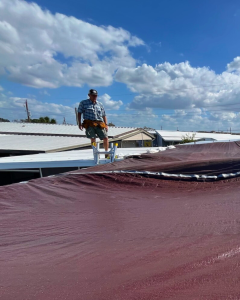
Kirkpatrick, Pietrzyk, and other church members decided they needed to step up to help out, especially because Trailer Estates was a 55-and-over community, and many of those folks didn’t have the physical strength or stamina to do much of the work. So they released significant church fund for hurricane relief and assistance in the form of a grant they called “Ray of Hope.” They began distributing cash to people in need, coalescing around the two main points of community contact, the church and the post office. Similarly, Tri-Par provided relief assistance grants. Even though the money they distributed was far from sufficient to address all the needs, it helped to build momentum. Groups of volunteers began descending on the community to pitch in and lend pro bono help, including a motorcycle gang called the Gideons.
“We tell people, ‘This is not going to take care of your long-term needs, but it’s a start,’” said Pietrzyk.
Even though there’s still a ton of work to be done, Kirkpatrick is encouraged by how far they have already come. “God puts the right people in the right places at the right time,” he told me.
According to Pietrzyk, the church was able to step in and help fill gaps that local agencies were unable to cover, helping people find food and shelter, providing power stations so people could charge their phones, and providing temporary forms of transportation for people whose vehicles were lost.
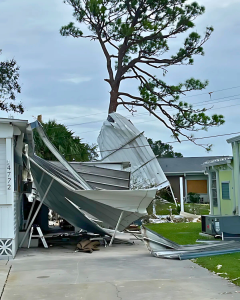
“There are a lot of things you wouldn’t expect,” said Pietrzyk. For example, in the immediate aftermath, the streets were so covered with bits of metal debris that cars couldn’t drive on those surfaces without their tires being punctured. “The church secured some magnetic sweepers, so that we could clear up as much of that as possible.”
Kirkpatrick mentioned one gentleman whose roof had been destroyed. The wind had blown his carport up and over the roof, which prevented him from being able to assess the roof damage. So Kirkpatrick took out a metal saw and cut a small portion of the carport, just enough for the man to get up to the roof. And he left some saw blades with the man. When Kirkpatrick came back the next day, the man had pretty much removed the rest of the carport from his roof by himself.
“Just that little bit of cutting, it gave him an opening of hope,” said Kirkpatrick. “Just enough of an opening for him to move forward.”
Administering from Atlanta
In my conversations with pastors affected by the storms, all were effusive in their gratitude for the Covenant. They were deeply thankful for grants from LMDJ, funded by generous gifts from Covenanters. Rev. Ramelia Williams, director of Love Mercy Do Justice initiatives, noted, “The support of generous donations by individuals and churches allows us to partner with our churches in immediate crisis response and rebuilding communities after the storm. We are grateful for their hearts of compassion and mercy that allow us to do this work.”
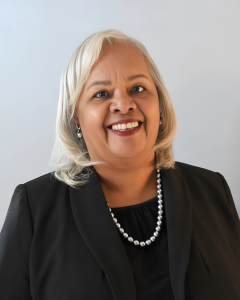
I also heard pastors express gratitude for the coordination and care from Superintendent Catherine Gilliard and the Southeast Conference, which has its offices in Atlanta, Georgia.
So it was no surprise that when we spoke over the phone recently, Rev. Dr. Gilliard kept stressing the importance of preparedness, patience, and long-term support for the pastors and churches under her care. As a matter of fact, we were well into the conversation before she told me anything about how recent circumstances her personally, and it was only specifically because I asked.
Neither hurricane created extensive flooding or property damage in the Atlanta area beyond downed trees and normal hurricane floodwaters. However, a chlorine leak from a chemical plant fire left 90,000 residents east of Atlanta under a shelter-in-place order because of poor air quality.
“My daughter, when she went outside, she said her eyes were burning,” said Gilliard.
Still, despite being confined to her home for the better part of a week, Gilliard has been constant presence, both virtually and in person, providing support and oversight for the ministries in her conference, especially the ones hit hard by the back-to-back storms.
“Our conference is in the path of just about every storm,” she said.
“It’ll hit somewhere in the Mississippi, Alabama area, or Florida or North Carolina. So responding is really about allowing people who are trained to do this work, our first responders, to go in first. Then the church can do the long-term healing and cleanup. After the cameras are gone, people are still trying to deal with how they’re going to rebuild and restore their communities.”
Gilliard stressed that pastors everywhere should be aware of their conference’s procedures and processes for how to endure any kind of natural disaster and to incorporate that knowledge into their own disaster response plans.
But beyond the logistical and administrative, Gilliard says that in the midst of any disaster or emergency, pastors need to be ready to provide a non-anxious presence. Accordingly, she tries to model the same approach as she supports those who support others.
“That’s the initial way we want to be accountable to one another. We want to check in to make sure everyone’s okay. Once we’ve done that and given them time to check with their members, then we can say, ‘Okay, we can praise God. There’s been no loss of life. The property can be repaired. Communities can be restored. Let’s figure out then what our game plan should be from this point on.’”
She also stressed that pastors need to also make sure that they’re taking care of themselves.
“The pastors have been weary,” said Gilliard. “They’re tired. There’s a lot going on. They’re not immune to the storm damage, and they have their own homes to attend to. Caring for others while you’re also hurting is a deep thing to try to navigate.”
I also spoke with Pastor Jonathan Kosec of Bay Indies Covenant Church in Venice, Florida. That church was also dealing with many of the same issues as Pietrzyk in Trailer Estates. Kosec mentioned his appreciation of Gilliard and the conference staff, particularly the way they’ve been pouring into their leaders. He mentioned that the conference had initially planned a pastors’ retreat in Asheville, North Carolina—but the hurricane had other plans. Still, Kosec says that Gilliard and the conference staff have been doing their best to provide pastors with as many resources and as much encouragement as possible.
“She has been such a powerful spiritual leader,” he said.
Just as other pastors said, Kosec told me that above all, he sees his mission as restoring hope.
“We just need to keep driving home the fact that despite these circumstances, we’re not left alone. The other week, I preached on Noah. And I told the people, ‘Y’know, I wonder what it was like when they came out of the ark. Do you think it was pristine? Or was the aluminum on the carports crumpled up?’”
After recalling the laugh that one got from the congregation, Pastor Jonathan was circumspect. “It doesn’t really matter the circumstances. God was with them, and God’s with us, too.”


